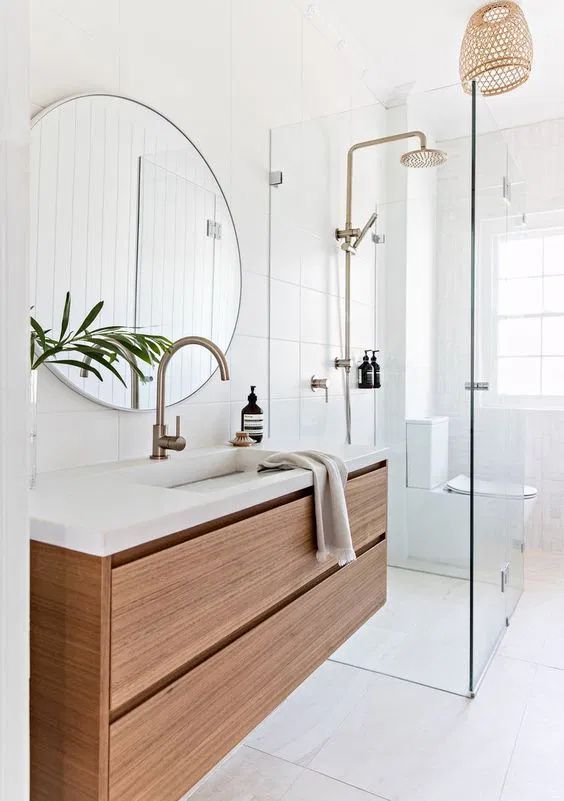A bathroom upgrade can be a significant investment, but it doesn’t always have to break the bank. With careful planning, strategic choices, and a willingness to get hands-on, you can achieve a refreshed and functional bathroom without overspending. Saving money on your renovation project involves a combination of smart material selection, efficient labor management, and avoiding common pitfalls that lead to unexpected costs.
1. Define Your Scope and Prioritize
The most effective way to control bathroom upgrade cost is to have a clear vision and stick to it.
- Be Realistic: Understand the difference between a cosmetic refresh, a mid-range remodel, and a high-end renovation. A minor update will always be more affordable than moving walls and plumbing.
- Needs vs. Wants: Make a list of your absolute “must-haves” (e.g., a functional toilet, a leak-free shower) and your “wants” (e.g., heated floors, a freestanding tub). Prioritize spending on needs first. If the budget allows, you can then consider some wants.
- Keep the Layout: This is the golden rule of budget-friendly renovations. Moving plumbing lines for toilets, sinks, or showers is one of the most expensive aspects of a bathroom remodel, as it requires specialized labor and can uncover hidden issues. Stick to the existing layout whenever possible.
2. Embrace Smart Material Choices
Materials are a major cost driver, but there are many ways to achieve a high-end look without the high-end price tag.
- Affordable Flooring: Instead of expensive natural stone, consider durable and stylish alternatives like luxury vinyl tile (LVT) or large-format ceramic/porcelain tiles. LVT can mimic wood or stone at a fraction of the cost, and larger tiles can reduce tiling labor.
- Budget-Friendly Countertops: For vanities, explore laminate or pre-fabricated solid surface countertops. These are significantly cheaper than custom quartz or granite slabs but can offer a similar aesthetic.
- Refinish, Don’t Replace: If your bathtub or vanity is structurally sound but looks dated, consider refinishing or painting them instead of buying new. Bathtub refinishing kits can give an old tub a new lease on life for a few hundred dollars. Painting vanity cabinets and adding new hardware is a very inexpensive update.
- Stock Fixtures: Choose standard, off-the-shelf toilets, sinks, and faucets from major retailers. While designer brands offer unique styles, basic models are often just as functional and durable at a much lower price point.
- Bulk Purchases: If you’re buying a large quantity of a single material (like tile), inquire about bulk discounts.
3. Strategic DIY Efforts
Doing some of the work yourself can significantly reduce labor costs, but be realistic about your skills.
- Paint: Painting is one of the easiest and most impactful DIY tasks. A fresh coat of moisture-resistant paint can transform the space for under $100.
- Demolition (with caution): If you’re comfortable and knowledgeable about safety, you can save on demolition labor. However, be extremely careful around plumbing and electrical lines, and understand proper waste disposal.
- Hardware and Accessories: Swapping out cabinet pulls, towel bars, light fixtures (if no rewiring), and mirrors are generally straightforward DIY tasks.
- Simple Flooring: Installing peel-and-stick vinyl tiles or basic click-and-lock laminate flooring can be a manageable DIY project.
- Grout Refresh: Re-grouting existing tiles or using a grout pen is an inexpensive way to make old tiles look new.
- Know Your Limits: For complex tasks like plumbing rerouting, electrical wiring, or intricate tile work, it’s always best to hire licensed professionals to avoid costly mistakes, safety hazards, and code violations.
4. Smart Contractor Management
If you’re hiring professionals, be a smart consumer.
- Get Multiple Quotes: Obtain at least three detailed quotes from different licensed and insured contractors. Ensure all quotes specify the same scope of work and materials for accurate comparison.
- Detailed Contracts: Insist on a written contract that clearly outlines all work, materials, timelines, and payment schedules. This helps prevent misunderstandings and scope creep.
- Avoid Mid-Project Changes: Once the project starts, avoid making significant changes to the plan. Each “change order” adds to the cost and can cause delays.
- Negotiate: Don’t be afraid to negotiate prices, especially if you have competing bids.
5. Account for Hidden Costs
Even with careful planning, unexpected issues can arise.
- Contingency Fund: Always set aside a contingency fund of 10% to 20% of your total estimated budget. This buffer will cover unforeseen problems like mold, water damage, or outdated wiring discovered during demolition.
By implementing these money-saving strategies, you can achieve a beautiful and functional bathroom upgrade that stays within your financial comfort zone.

